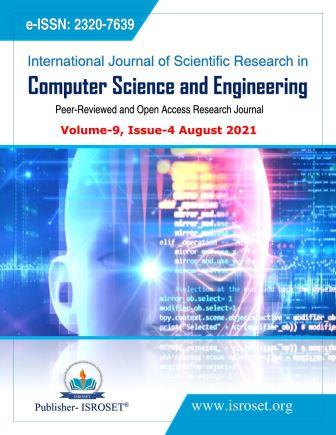A Prediction Model addressing the Changes and Challenges in Adopting SEaaS Model during COVID-19
Keywords:
Software Engineering, COVID-19, Software as a Service, Prediction ModelsAbstract
During this world-wide universal lockdown period, software companies are trying to find a possible solution to keep up their everyday activities. Software Engineering as a Service (SEaaS) will be able to provide support to the processes which they have been doing in the software development lifecycle (SDLC). Elaborately, SEaaS model has the ability to intelligently provision the design, development, testing, deployment and maintenance of the software. Pre-COVID-19 and conventionally, software design and development happens within the corporate’s boundary which always requires up-front investments, planning, procurement of infrastructure, purchase of software tools and space for development. During this COVID-19 lock-down and post this period, SEaaS will take care of the complete SDLC processes, and provision an end-to-end design and development model. This migration of on-campus development to off-campus (SEaaS cloud based) development is not without challenges and the changes that are needed at the SDLC process level. This paper addresses the changes that will be needed and the challenges that need to be addressed when software development enterprises adopt their design and development processes and environment to SEaaS model. Also a machine learning model predicting the scope of SEaaS in the Off-Campus is built, scoring a significant fit in the prediction model.
References
‘Covid-19 pandemic set to reshape nature of work’, Hindustan Times, https://www.hindustantimes.com/india-news/covid-19-pandemic-set-to-reshape-nature-of-work/story-h5fx3c5WA90xgIcT5rrgAP.html, accessed March, 2020
Krebs R, Momm C, Konev S., “Architectural concerns in multi-tenant SaaS applications”, In the Proceedings of the 2nd International Conference on Cloud Computing and Service Science, Shanghai, pp. 426–431, 2012
Nagappan, M., Mirakhorli, M. “Big(ger) Data in Software Engineering”, In the Proceedings of the International Conference Software Engineering, pp. 957-958, 2015
Bezerra RO, Rabelo RJ, Cancian MH., “Supporting SOA resilience in virtual enterprises, collaborative networks of cognitive systems”, In the Proceedings of the 19th IFIP WG 5.5 working conference on virtual enterprises, Cardiff, UK, 2018.
Rastogi, V. “Software Development Life Cycle Models-Comparison, Consequences”, International Journal of Computer Science and Information Technologies, Vol. 6, No. 1, pp. 168- 172, 2015
Neelu Lalband, D. Kavitha, “Software Engineering for Smart Healthcare Applications”, International Journal of Innovative Technology and Exploring Engineering, Vol. 8, No. 6S4, 2019.
Augustsson NP, Nilsson A, Holmström J, Mathiassen L. “Managing digital infrastructures: negotiating control and drift in service provisioning’, International Journal Business Information System, Vol. 30, No. 1, pp. 51–78, 2019
Cestari JMAP, Loures EFR, Santos EAP, Panetto H. “A capability model for public administration interoperability”, Enterprise Information Systems, 2019.
“12 Factors To Help You Evaluate Potential Technical Solutions”, https://www.forbes.com/sites/forbestechcouncil/2017/02/09/12-factors-to-help-you-evaluate-potential-technical-solutions/#52e6ce714f66 accepted June 2020.
Sandanayake, T. ., & Jayangani, P., “Current Trends in Software as a Service (SaaS)”, International Journal for Innovation Education and Research, Vol. 6, No. 2, pp. 221-234, 2018
Giuliano Casale , Cristina Chest, et. al. “Current and Future Challenges of Software Engineering for Services and Applications”, In the Proceedings of the Cloud Futures: From Distributed to Complete Computing, Madrid, Spain, Vol. 97, pp. 34 – 42, 2016
Kneuper, R. “Sixty Years of Software Development Life Cycle Models”, IEEE Annals of the History of Computing, Vol. 39, No. 3, pp. 41-54, 2017
Liu Y Wang Lunyan, Hu Fangyuan, Yuan Lu., “Security Access Control in SaaS Mode Based on Improved RBAC Model”, Journal of Modern Computer, Vol. 15, pp. 81-84, 2017
Gorton, I., Bener, A., Mockus, A. “Software Engineering for Big Data Systems”, IEEE Software, Vol. 33, No. 2, pp. 32-35, 2016
‘The Coronavirus Impact: How COVID-19 has affected Tech and Software Industry worldwide, A Report from SEASIA’, https://www.seasiainfotech.com/blog/the-coronavirus-impact-how-covid-19-has-affected-tech-and-software-industry-worldwide/ accessed April, 2020
S. Schneider, A. Sunyaev, “Determinant Factors of Cloud-Sourcing Decisions: Reflecting on the IT Outsourcing Literature in the Era of Cloud Computing”, Journal of Information Technology, Vol. 31, No. 1, pp. 1–31, 2016
Euripidis L., M. Janssen, Ianislav M. “Determinants of Software-As-A-Service Benefits and Impact on Firm Performance”, Decision Support System, Vol. 117, pp. 38-27, 2019
Downloads
Published
How to Cite
Issue
Section
License

This work is licensed under a Creative Commons Attribution 4.0 International License.
Authors contributing to this journal agree to publish their articles under the Creative Commons Attribution 4.0 International License, allowing third parties to share their work (copy, distribute, transmit) and to adapt it, under the condition that the authors are given credit and that in the event of reuse or distribution, the terms of this license are made clear.







